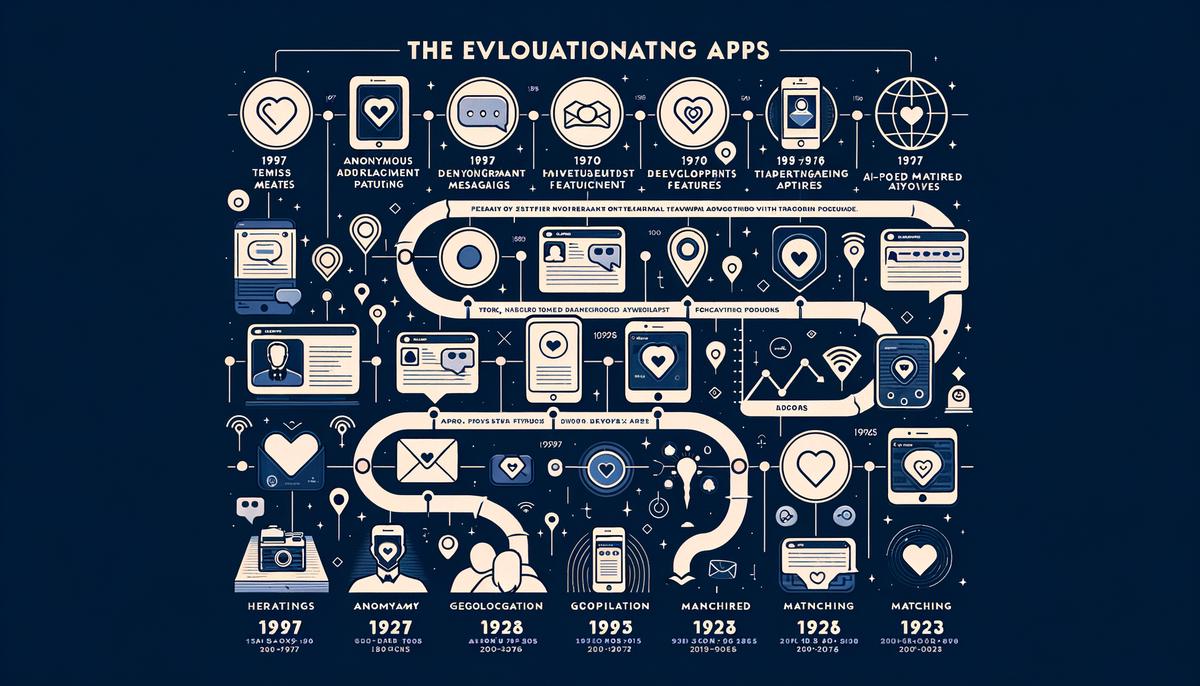Have you ever stopped to wonder what keeps relationships and partnerships strong over time? The answer is simpler and more powerful than you might think. Trust is the invisible bond that ties people together, making them stronger and more connected than ever before. Whether in friendships, family, or business, trust stands as the crucial element that ensures we can rely on one another, come what may. In this exploration, we’ll uncover the reasons why trust is not merely important but absolutely fundamental to any successful partnership.
The Foundation of Trust
Why Trust Is the Foundation of Every Partnership
Have you ever paused to think about what glues relationships together? What makes partnerships, whether in business or life, tick and stand the test of time? At the heart of every strong partnership is trust. Let’s explore why trust isn’t just important, but absolutely foundational to any partnership.
Starting with the basics, trust allows us to rely on others. Imagine a world where you couldn’t count on anyone; chaos would reign supreme. In relationships, business, or any team effort, believing that the other party will do what they say they will is crucial. It’s like knowing that when you pass the ball in a game, your teammate is going to be there to catch it.
Moreover, trust acts as a powerful stress reducer. Think about it. When you know you can rely on your partner, whether we’re talking about a business venture or life journey, you sleep better at night. You’re not up, worrying if they’re going to meet their part of a deal or keep a promise. It takes a load off your shoulders, allowing you to focus on moving forward rather than dwelling on doubts.
Now, consider the growth aspect. Trust fosters an environment where mistakes are not seen as catastrophes but as opportunities for growth. When there’s trust, people feel secure enough to take risks and innovate. This openness is what drives partnerships to thrive and adapt, instead of stagnating. Think of it like exploring a new city with a map versus without one; trust gives you the confidence to wander a bit more because you know you have a solid base to return to.
Let’s also talk about conflict – yes, it’s inevitable in any partnership. However, trust ensures that when arguments happen, they don’t spell the end. Instead, because there’s a foundational belief in each other’s intentions, conflicts become a way to strengthen ties, clarify expectations, and understand each other better. It’s not about one winning and the other losing but about moving forward together.
Crucially, trust builds resilience. Partnerships will face challenges – that’s a given. Trust is the safety net that ensures that when you fall, you’re caught and helped back up. It’s knowing that even in the face of adversity, you’re not alone. This resilience is what defines successful from faltering partnerships.
In the realm of communication, trust is a key player too. It encourages honesty and open lines of dialogue. With trust, there’s no need for games or reading between lines. Communication becomes straightforward because you believe in the transparency of the other party. It’s like having a direct line, preventing misunderstandings and confusion.
But how does trust come to be? It’s built over time, through consistent actions, reliability, and open communication. It requires effort, patience, and sometimes forgiveness. And once it’s established, it needs to be nurtured continually, like tending a garden, to keep it strong and healthy.
In closing, trust is not just a nice-to-have in partnerships; it’s the very foundation that they stand on. Without trust, partnerships are on shaky ground, constantly threatened by miscommunication, stress, and instability. With trust, partnerships are poised for growth, resilience, and success. It’s the assurance that, no matter what, you’re in it together, navigating the ups and downs as a unified force. And that’s the magic of trust – it’s what transforms individuals into unbreakable teams.

Building Trust: Steps and Strategies
Maintaining and enhancing trust in relationships isn’t just about grand gestures; it’s about consistent, everyday actions and decisions that show your partner you value and respect them. Here are surefire ways to keep the foundation of trust strong in your partnership:
- Stick to Your Word and Follow Through: If you say you’re going to do something, do it. Being reliable is a cornerstone of trust. Whether it’s something as simple as taking out the trash or a more significant promise, your actions should match your words. This consistency tells your partner they can depend on you.
- Communicate Openly and Honestly: Don’t keep secrets or leave things unsaid. If something’s bothering you about your relationship or otherwise, bring it up. It might be uncomfortable, but these conversations are crucial for trust. You’re showing your partner that you trust them with your feelings and thoughts.
- Apologize and Forgive: We all make mistakes, but what’s important is how we handle them. When you mess up, own it and apologize sincerely. On the flip side, be willing to forgive your partner for their mistakes. Holding grudges only erodes trust.
- Show Respect for Your Partner’s Boundaries: Everyone has their own boundaries and comfort zones. Respect your partner’s limits, and don’t push them to do anything they’re uncomfortable with. This respect shows you value their feelings and autonomy.
- Be There for Them: Show up for your partner in both the good times and the bad. Supporting them through challenges and celebrating their successes builds a deep trust that you’re a reliable source of comfort and joy in their life.
- Keep the Little Promises: It’s not just about the big commitments; the little promises matter too. Whether it’s remembering to pick up milk on the way home or calling when you said you would, these small acts of thoughtfulness reinforce the trust in your relationship daily.
- Regular Check-ins: Life gets hectic, but taking the time to check in with each other can make all the difference. Ask how your partner is doing and genuinely listen to their response. This practice shows you care about their wellbeing and are a stable part of their support system.
- Privacy and Independence: Trust also means giving each other space. Respecting your partner’s need for privacy and independence demonstrates your trust in them. Hovering or being overly invasive can signal mistrust, so find that balance of closeness and space.
Building and maintaining trust is like weaving a tapestry; it’s done thread by thread, with patience and attention to detail. By incorporating these habits into your relationship, you’re not only saying “I trust you,” but also “I’m trustworthy.” It’s about being a partner they can rely on, come what may. Maintaining trust requires effort from both sides, but when it’s there, it’s the glue that holds everything together, making every challenge easier to overcome and every joy even more profound. Keep nurturing that trust, and your partnership can become an enduring source of mutual support, love, and respect.

Trust Challenges and Conflict Resolution
In the journey of partnerships, whether they’re the kind sprouting from professional fields or the depths of personal connections, navigating the rough waters of challenges to trust is akin to traveling through uncharted territories. Interestingly, just as in traveling, the obstacles to trust in partnerships can be varied and unexpected, yet the strategies to conquer them share a common theme — understanding, adaptability, and continuous effort.
One prominent challenge that threatens the bedrock of trust is inconsistency in actions versus words. Imagine planning a group hike, where one promises to bring the water and another the food. If someone continually forgets their part, trust erodes. In partnerships, if actions don’t align with promises, the belief in each other’s reliability fades. The remedy? Start small. Ensure that your actions consistently reflect your commitments, no matter the scale.
Another subtle yet pervasive obstacle is the fear of vulnerability. Sharing our deepest fears, desires, and mistakes makes us human, but the fear of being judged or misunderstood can hold us back. Like stepping into a cold river, easing into vulnerability with small truths can strengthen the trust between partners. It’s about sharing that odd hobby or admitting to a silly mistake. Over time, these small moments of vulnerability lay down the foundation for a trust that’s hard to shake.
Misunderstandings and assumptions also loom large on the horizon, threatening trust. It’s easy to misconstrue a missed call or a forgotten date as disinterest or neglect. However, jumping to conclusions without seeking clarity is akin to navigating without a compass. Here, the antidote is simple yet profound — assume positive intent and seek to understand before being understood. It’s about pausing and asking, “What’s your side of the story?” before the mind races to conclusions.
Unexpected changes in personal values or goals can also strain the trust in partnerships. Over time, individuals evolve, and what once was a common goal might diverge into separate paths. It’s like starting a journey together headed to the same destination, only to find midway that one wishes to take a detour. Navigating this requires open conversations about personal growth and aspirations, where both partners listen to understand, not to respond. It’s about respecting each other’s evolving journey while finding common ground or agreeing on new paths forward together.
Lastly, external pressures — be it family opinions, societal expectations, or professional demands — can erode trust. The voices and demands from outside can overshadow the partnership’s own rhythm and pace. Like too many cooks spoiling the broth, too many external influences can cloud judgment and actions within the partnership. The strategy here is twofold: firstly, create a solid bubble around the partnership, a space where external pressures can’t easily penetrate. Secondly, foster a partnership culture where decisions are made collaboratively, weighing what’s best for the partnership over outside opinions.
In essence, the challenges to trust in partnerships might seem daunting, but they’re not insurmountable. Like a traveler who plans, adapts, and embraces the journey with an open heart, navigating these challenges requires a blend of open communication, mutual respect, and unwavering commitment to the partnership. It’s about choosing to walk through the storm together, holding onto the belief that the sun shines brightest after the rain.

The Impact of Trust on Partnership Success
Continuing from our conversation on trust and its critical role in the success of partnerships, it’s essential to delve into the factors that can further impact trust dynamics. Understanding these elements can significantly influence how trust contributes to thriving partnerships. So, let’s explore some more nuanced aspects that affect the foundation and maintenance of trust between partners.
Adapting to Change Together
Life is all about change, and how partners navigate these shifts can make or break their trust bond. When both individuals are committed to adapting together, it reinforces the trust between them. It’s like being in a small boat on a vast ocean; the weather will change, but if both are rowing in sync and adjusting the sails together, they’ll weather the storm. Embracing change as a team, and viewing it as an opportunity for growth, solidifies a partnership like nothing else.
Consistency in Values and Actions
While sticking to your word is the bedrock of trust, it’s also vital that actions consistently align with proclaimed values over time. If one partner values transparency but acts secretively, this misalignment can erode trust. Think of it as building a house; the materials (values) need to match the blueprint (actions). Otherwise, the structure won’t hold. Partnerships thrive when actions and values are in sync, offering a clear roadmap for trust to flourish.
Dealing with External Influences
External pressures, be it from family, society, or professional demands, test the resilience of trust in partnerships. It’s like being plants in a shared pot; the external environment affects how well you can grow together. Shielding your partnership from negative external influences requires a united front, where trust in each other’s decisions and actions provides the nutrients for growth amidst external challenges.
Understanding and Meeting Needs
Trust deepens when partners understand and strive to meet each other’s needs. It’s akin to a dance where understanding the rhythm and steps of your partner leads to a beautiful performance. When you acknowledge and fulfill your partner’s needs, it sends a powerful message of care and commitment, reinforcing the trust bond. It’s about seeing the effort put into knowing what makes each other happy and secure, thereby strengthening the partnership foundation.
Managing Expectations
Unchecked expectations can be a silent trust-breaker in partnerships. It’s akin to setting a navigation path without agreeing on the destination. Transparency about expectations, both big and small, sets a clear course. When partners communicate their expectations and negotiate their wants and needs, it prevents potential disappointments that could erode trust. It’s about crafting a shared journey that both are excited to embark on, with trust as the guiding light.
In wrapping up, trust in partnerships isn’t just about big gestures; it’s the small, consistent actions and shared experiences that build a bedrock of relatability and reliability. It’s about navigating the changes, aligning actions with values, standing united against external pressures, understanding and fulfilling needs, and managing expectations together. Each of these aspects layers in added depth to the trust between partners, making the partnership not just survive but thrive. As we journey through life, embracing these elements can turn partnerships into havens of trust, filled with growth, innovation, and mutual support.

As we’ve seen, trust isn’t just an added bonus to a partnership; it’s the very essence of what makes relationships work and thrive. It’s about more than just believing in each other; it’s about actions, consistency, and the small day-to-day moments that build a foundation strong enough to withstand any challenge. By fostering trust through understanding, respect, and mutual support, partnerships can grow into unbreakable bonds that last a lifetime. Thus, trust is not only the foundation upon which successful partnerships are built; it is the core that holds them together, guiding them towards a future filled with mutual respect, love, and shared success.










